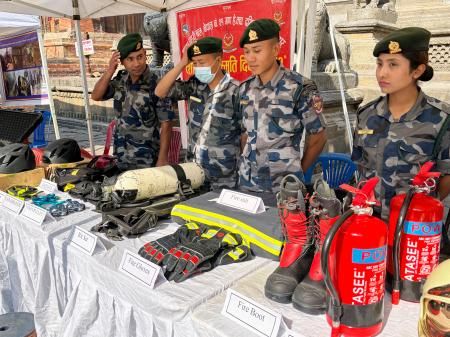Nepal Earthquake: A Decade Later – Resilience, Reconstruction, and the Road Ahead
Ten years after the devastating 2015 Nepal earthquake, the nation continues its journey of recovery and reconstruction. The 7.8 magnitude earthquake, and subsequent aftershocks, left a scar on the landscape and the hearts of the Nepali people, claiming thousands of lives and causing widespread destruction. This article explores the progress made, the challenges that remain, and the lessons learned a decade after this monumental tragedy.
The Scars Remain: Remembering the Devastation
The April 25th, 2015, earthquake remains etched in the memory of Nepal and the global community. The impact was catastrophic:
- Massive Casualties: Over 9,000 lives were lost, and tens of thousands were injured.
- Widespread Destruction: Entire villages were reduced to rubble, historical landmarks were damaged, and critical infrastructure, including hospitals and schools, were crippled.
- Economic Fallout: The earthquake dealt a significant blow to Nepal's already fragile economy, impacting tourism, agriculture, and overall development.
The images of collapsed buildings, desperate survivors, and the sheer scale of destruction shocked the world, prompting a massive international aid effort.
Beyond the Numbers: Human Stories of Resilience
While the statistics paint a grim picture, the human stories of resilience emerging from the devastation are equally compelling. The spirit of the Nepali people, their community support, and their unwavering determination to rebuild their lives have been remarkable. Many individuals and organizations worked tirelessly in the aftermath, showcasing the power of human compassion and solidarity in the face of adversity. This spirit continues to drive Nepal's ongoing recovery efforts.
Reconstruction and Recovery: Progress and Setbacks
The decade since the earthquake has witnessed significant progress in reconstruction, but the road has been far from smooth.
- Housing Reconstruction: While substantial progress has been made in rebuilding homes, particularly through government-led programs, challenges persist, including bureaucratic hurdles and equitable distribution of aid.
- Infrastructure Development: Efforts to rebuild and strengthen critical infrastructure, such as roads, bridges, and hospitals, are ongoing, though significant investment and expertise are still needed.
- Cultural Heritage Preservation: The restoration of damaged historical sites and temples, vital to Nepal's cultural heritage, remains a complex and lengthy process. This requires specialized skills and careful planning to ensure authenticity.
- Economic Recovery: Nepal's economy has gradually recovered, although the earthquake's lingering effects are still visible, particularly in rural communities. Tourism, a significant part of the economy, experienced a temporary slump but has since rebounded.
Challenges that Persist: Addressing Inequality and Vulnerability
Despite progress, considerable challenges remain:
- Geographic Accessibility: Reaching remote and mountainous areas with aid and reconstruction efforts continues to be a significant logistical hurdle.
- Corruption and Transparency: Concerns regarding transparency and accountability in the use of aid funds have hampered progress in several areas.
- Disaster Preparedness: While lessons were learned, Nepal still needs improved disaster preparedness measures to mitigate the impact of future earthquakes. This includes strengthening building codes and enhancing community-based early warning systems.
Looking Ahead: A Resilient Future for Nepal
The 2015 Nepal earthquake serves as a stark reminder of the devastating impact of natural disasters. However, it also highlights the incredible resilience of the Nepali people and the importance of international cooperation in disaster response and recovery. The focus now shifts towards long-term sustainable development, ensuring that the lessons learned are applied to create a more resilient and equitable future for Nepal. Continued international support, coupled with sustained commitment from the Nepali government and its people, will be crucial in fully realizing this vision.
Keywords: Nepal earthquake, 2015 Nepal earthquake, Nepal reconstruction, Nepal recovery, earthquake resilience, disaster relief, international aid, Nepal tourism, building codes, disaster preparedness, sustainable development.
Call to Action: Learn more about organizations supporting Nepal's recovery efforts and consider contributing to their work. You can find resources and information through a simple online search.
